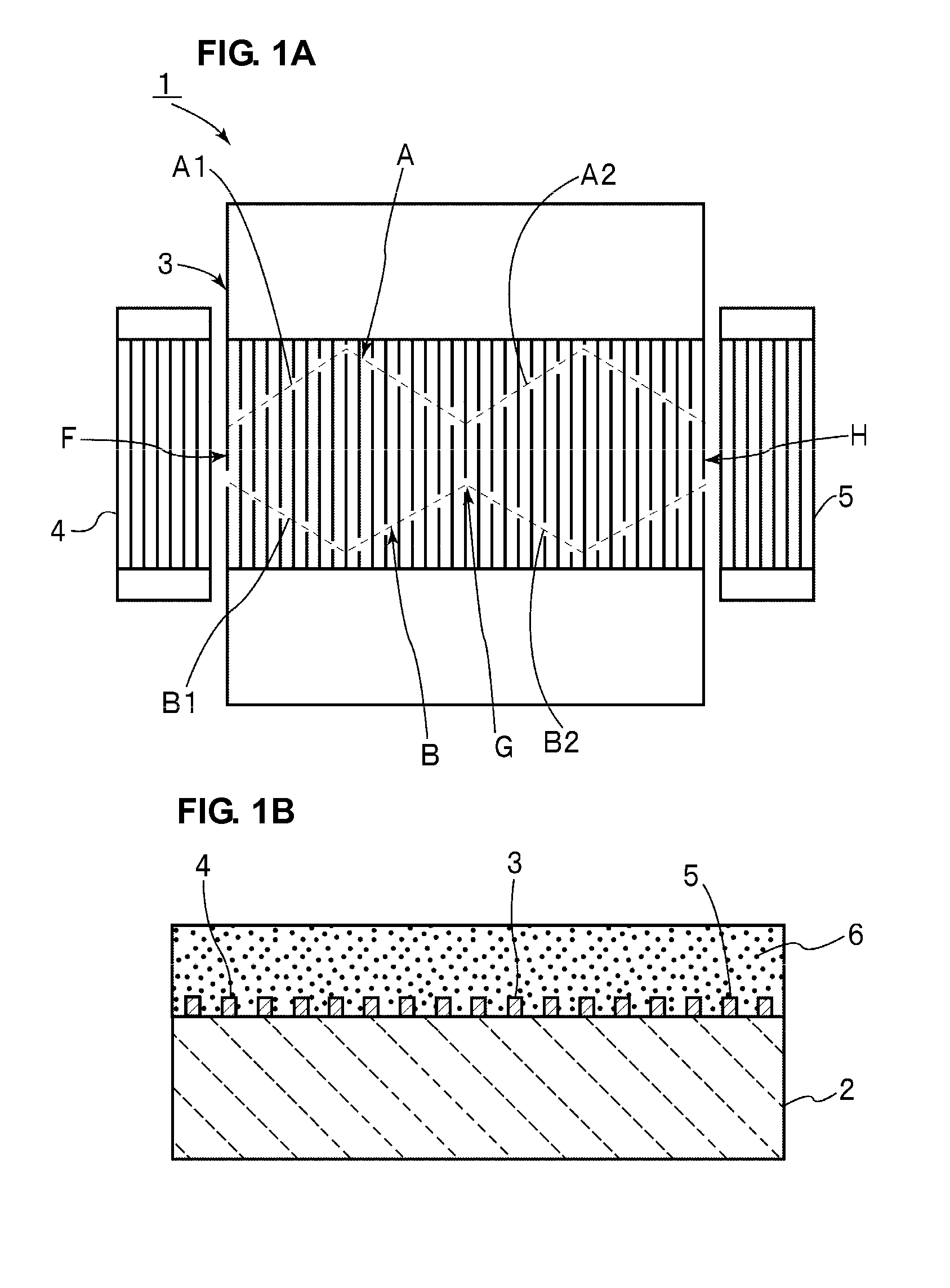Acoustic wave resonator
a technology of acoustic waves and resonators, applied in piezoelectric/electrostrictive/magnetostrictive devices, piezoelectric/electrostriction/magnetostriction machines, electrical apparatus, etc., can solve the problem of purious responses caused by transverse modes, concentration of power consumption at the center of the idt electrode, etc. problem, to achieve the effect of satisfying the resonance characteristics
- Summary
- Abstract
- Description
- Claims
- Application Information
AI Technical Summary
Benefits of technology
Problems solved by technology
Method used
Image
Examples
Embodiment Construction
[0043]Preferred embodiments of the present invention will be described in detail with reference to the drawings.
[0044]FIG. 1A is a schematic plan view illustrating an electrode structure of a surface acoustic wave resonator according to a first preferred embodiment of the present invention and FIG. 1B is a schematic elevational cross-sectional view of the surface acoustic wave resonator shown in FIG. 1A. A surface acoustic wave resonator 1 includes a piezoelectric substrate 2. In the present preferred embodiment of the present invention, the piezoelectric substrate 2 is preferably made of a 126-degree Y-cut, X-propagating LiNbO3 substrate, for example. Note that the piezoelectric substrate 2 may be made of a LiNbO3 substrate having another crystal orientation or of another piezoelectric single crystal such as LiTaO3. In addition, the piezoelectric substrate 2 may be made of piezoelectric ceramics. Further, the piezoelectric substrate 2 may have a structure in which a piezoelectric f...
PUM
 Login to View More
Login to View More Abstract
Description
Claims
Application Information
 Login to View More
Login to View More - R&D
- Intellectual Property
- Life Sciences
- Materials
- Tech Scout
- Unparalleled Data Quality
- Higher Quality Content
- 60% Fewer Hallucinations
Browse by: Latest US Patents, China's latest patents, Technical Efficacy Thesaurus, Application Domain, Technology Topic, Popular Technical Reports.
© 2025 PatSnap. All rights reserved.Legal|Privacy policy|Modern Slavery Act Transparency Statement|Sitemap|About US| Contact US: help@patsnap.com



